- Choose the Right Seeds for Your Aquilegia Plants
- 1. Variety
- 2. Freshness
- 3. Quality
- 4. Growing Conditions
- 5. Pollinator-friendly
- Prepare the Soil for Sowing Aquilegia Seeds
- Sow Your Aquilegia Seeds in the Correct Season
- Choosing the Right Time
- Preparing the Soil
- Sowing the Seeds
- Watering and Care
- Final Thoughts
- Provide Adequate Water and Sunlight for Germination
- 1. Choose a Well-Draining Soil Mix
- 2. Pre-Moisten the Soil
- 3. Sow the Seeds at the Right Depth
- 4. Provide Bright Indirect Sunlight
- 5. Maintain Moisture Levels
- 6. Provide Bottom Heat (Optional)
- 7. Wait for Germination
- Protect Your Aquilegia Seedlings from Pests and Diseases
- 1. Mulching
- 2. Monitoring
- 3. Handpicking
- 4. Companion planting
- 5. Watering
- 6. Fertilizing
- 7. Disease management
- 8. Protecting from extreme weather
- 9. Crop rotation
- 10. Proper disposal
- Ensure Proper Air Circulation for Healthy Growth
- Here are some tips to ensure proper air circulation:
- Why is proper air circulation important?
- Fertilize Your Aquilegia Seedlings for Optimal Nutrition
- Monitor and Care for Your Aquilegia Seedlings for 25 Days
- Step 1: Watering
- Step 2: Light
- Step 3: Temperature
- Step 4: Fertilizer
- Step 5: Thinning
- Step 6: Transplanting
- Step 7: Protection
- Step 8: Support
- Questions and Answers:
- What is Aquilegia?
- When is the best time to sow Aquilegia seeds?
- What kind of soil is best for growing Aquilegia seeds?
- How should I prepare the soil before sowing the Aquilegia seeds?
- How often should I water the Aquilegia seeds?
- Videos: How to sow seeds: six tips from Stephen Ryan to ensure successful seed germination.
If you’re a gardening enthusiast looking to add some vibrant colors to your garden, aquilegia seeds are a great choice. Also known as columbine or granny’s bonnet, aquilegia is a beautiful flowering plant that comes in various shades and shapes. Whether you’re a beginner or an experienced gardener, this step-by-step guide will help you successfully sow aquilegia seeds and nurture healthy seedlings in just 25 days.
1. Choose the right seeds: Start by selecting high-quality aquilegia seeds from a reputable source. Look for varieties that suit your preferences and climate conditions. Consider factors such as flower color, height, and hardiness.
2. Prepare the soil: Aquilegia thrives in well-drained soil that is rich in organic matter. Prepare the planting area by removing any weeds and loosening the soil. Add compost or well-rotted manure to improve fertility.
3. Sow the seeds: Sow aquilegia seeds directly into the prepared soil or start them indoors in seed trays. If starting indoors, fill the trays with a moist seed-starting mix and plant the seeds about 1/8 inch deep. Keep the soil consistently moist but not soggy.
4. Provide the right conditions: Aquilegia seeds germinate best in cool temperatures around 55-65°F (13-18°C). Place the seed trays in a well-lit area but away from direct sunlight. Maintain a consistent temperature and humidity level to ensure successful germination.
5. Transplant seedlings: When the seedlings have grown a few sets of true leaves, it’s time to transplant them into individual pots or into your garden. Choose a location with partial shade and well-drained soil. Space the seedlings about 8-12 inches apart.
6. Nurture the seedlings: Once transplanted, provide regular watering to keep the soil evenly moist. Apply a balanced liquid fertilizer every two weeks to promote healthy growth. Keep an eye out for pests and diseases, and take appropriate measures to control them.
Follow these steps diligently, and in just 25 days, you’ll have beautiful aquilegia seedlings ready to bring life to your garden. Enjoy the vibrant blooms and marvel at the wonders of nature!
Choose the Right Seeds for Your Aquilegia Plants
When it comes to sowing aquilegia seeds, it is important to choose the right seeds for your plants. Here are some factors to consider when selecting aquilegia seeds:
1. Variety
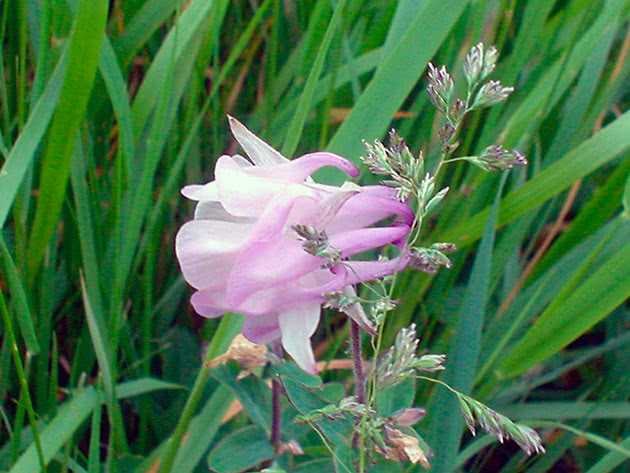
Aquilegia plants come in a variety of beautiful colors and forms. There are single-flowered and double-flowered varieties, as well as different colors like blue, purple, pink, yellow, and white. Decide on the specific variety that you want to grow and look for seeds of that particular type.
2. Freshness
Seeds have a limited shelf life, so it is important to choose fresh seeds for the best germination rates. Check the packaging or ask the seller for information on the seed’s freshness. It is recommended to use seeds that are less than a year old.
3. Quality
Choose high-quality seeds from reputable seed suppliers or nurseries. High-quality seeds are more likely to produce healthy and vigorous plants. Look for seeds that are plump, well-formed, and free from any signs of damage or disease.
4. Growing Conditions
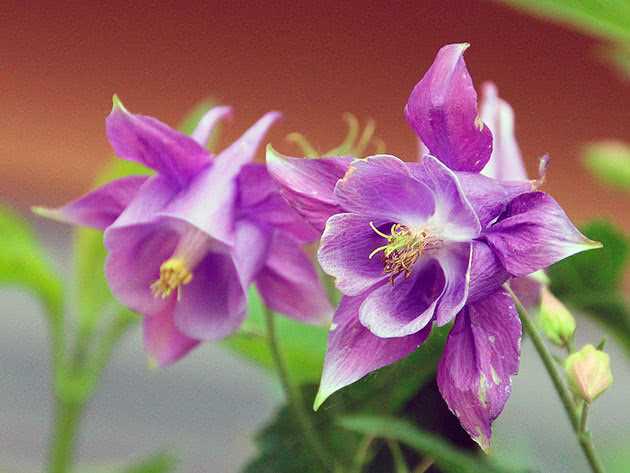
Consider the growing conditions in your garden when selecting aquilegia seeds. Some varieties of aquilegia prefer full sun, while others tolerate partial shade. Determine the sunlight, soil, and moisture requirements of the variety you want to grow, and choose seeds that are suitable for those conditions.
5. Pollinator-friendly
Aquilegia plants are known to attract pollinators like bees and butterflies. If you want to create a pollinator-friendly garden, choose seeds of aquilegia varieties that are known to attract pollinators. Look for varieties that have open, tubular flowers, as these are particularly attractive to pollinators.
By considering these factors, you can choose the right seeds for your aquilegia plants and set yourself up for success in growing healthy and beautiful flowers.
Prepare the Soil for Sowing Aquilegia Seeds
Before sowing Aquilegia seeds, it is important to prepare the soil to create optimal conditions for germination and growth. Follow these steps to prepare the soil:
- Choose a well-draining soil: Aquilegia plants prefer well-draining soil, so it is important to choose a soil mixture that allows excess water to drain effectively. Use a mix of garden soil and compost to improve drainage.
- Amend the soil: Test the pH level of the soil using a soil testing kit. Aquilegia plants thrive in slightly acidic to neutral soil with a pH range of 6.0 to 7.0. If the soil is too acidic, add lime to raise the pH level. If it is too alkaline, add sulfur to lower the pH level.
- Remove any debris: Clear the planting area of any debris, such as rocks, weeds, and plant residues. This will create a clean and clutter-free environment for the seeds to germinate.
- Loosen the soil: Use a gardening fork or a tiller to loosen the soil to a depth of about 6-8 inches. This will improve aeration and root penetration.
- Add organic matter: Incorporate well-rotted compost or aged manure into the soil. This will enrich the soil with nutrients and improve its texture, providing a favorable environment for seedling growth.
- Level the soil: Smooth out the soil surface using a rake or a garden hoe to create an even planting bed. This will help ensure uniform seed germination and prevent water pooling.
- Water the soil: Before sowing the Aquilegia seeds, thoroughly water the prepared soil to ensure proper moisture levels. The soil should be moist but not waterlogged.
By following these steps to prepare the soil, you will create an optimal environment for sowing Aquilegia seeds and nurturing healthy seedlings.
Sow Your Aquilegia Seeds in the Correct Season
When it comes to sowing aquilegia seeds, timing is crucial. These plants are best sown during the cooler months of the year, ideally in early spring or late fall. Sowing them during this time will provide the optimal conditions for successful germination and growth.
Choosing the Right Time
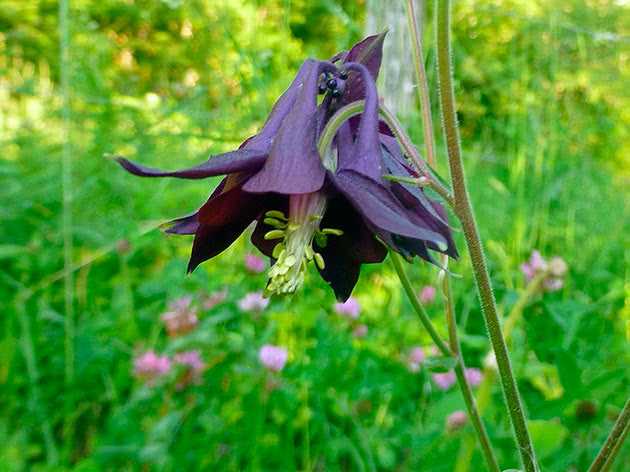
Aquilegia seeds prefer cooler temperatures, so it’s important to avoid sowing them during the hot summer months. Instead, aim to sow your seeds in early spring when the soil has thawed and the risk of frost has passed. Alternatively, you can sow them in late fall, allowing them to establish roots over the winter months.
Preparing the Soil
Before sowing your aquilegia seeds, it’s essential to prepare the soil. Start by loosening the soil with a garden fork or shovel to ensure good drainage. Remove any weeds or debris, as they can hinder the growth of the seedlings. If needed, amend the soil with compost or well-rotted manure to improve its fertility.
Sowing the Seeds
Once the soil is prepared, it’s time to sow your aquilegia seeds. Scatter the seeds evenly across the prepared area, ensuring they are not too close together. Alternatively, you can sow them in seed trays or pots, placing one or two seeds per cell or pot. Lightly press the seeds into the soil, but do not cover them with additional soil.
Watering and Care
After sowing the seeds, water the soil gently to provide moisture for germination. Keep the soil consistently moist, but not waterlogged, throughout the germination and growth process. Avoid overwatering, as this can lead to rotting of the seeds or seedlings.
It’s important to check the moisture level of the soil regularly and adjust your watering schedule as needed. Additionally, provide adequate sunlight for the seedlings to thrive. Aquilegia plants prefer partial shade, so ensure they receive at least a few hours of direct sunlight each day.
Final Thoughts
By sowing your aquilegia seeds in the correct season, you are setting them up for success. Remember, early spring or late fall are the best times to sow these seeds. With proper soil preparation, sowing techniques, and ongoing care, you can expect to see healthy aquilegia seedlings in just a few weeks.
Provide Adequate Water and Sunlight for Germination
One of the most important factors for successful germination of Aquilegia seeds is providing adequate water and sunlight. Here are some steps to follow:
1. Choose a Well-Draining Soil Mix
Aquilegia seeds require well-draining soil to prevent waterlogged conditions that can lead to seed rot. Use a soil mix specifically designed for seed starting or prepare your own by combining equal parts of peat moss, perlite, and vermiculite.
2. Pre-Moisten the Soil
Before sowing the Aquilegia seeds, moisten the soil mix evenly. Make sure it is damp but not soaked, as excess water can suffocate the seeds.
3. Sow the Seeds at the Right Depth
Aquilegia seeds should be sown at a depth of approximately 1/8 inch (3 mm) in the soil. Gently press the seeds into the soil and cover them lightly with a thin layer of soil.
4. Provide Bright Indirect Sunlight
Place the seed tray in a bright location with indirect sunlight. Avoid placing it in direct sunlight, as this can cause the soil to dry out too quickly and potentially harm the germinating seeds.
5. Maintain Moisture Levels
Keep the soil evenly moist during the germination process. Check the soil regularly and water gently as needed to prevent it from drying out completely. Avoid overwatering, as this can lead to fungal diseases.
6. Provide Bottom Heat (Optional)
If possible, provide bottom heat to enhance germination. You can use a seedling heat mat or place the seed tray on top of a warm surface, such as a refrigerator or radiator. This can help simulate natural conditions and speed up the germination process.
7. Wait for Germination
Aquilegia seeds typically germinate within 15 to 25 days. Be patient and avoid disturbing the soil during this period. Once the seedlings have emerged, continue to provide them with adequate water and sunlight to ensure their healthy growth.
Protect Your Aquilegia Seedlings from Pests and Diseases
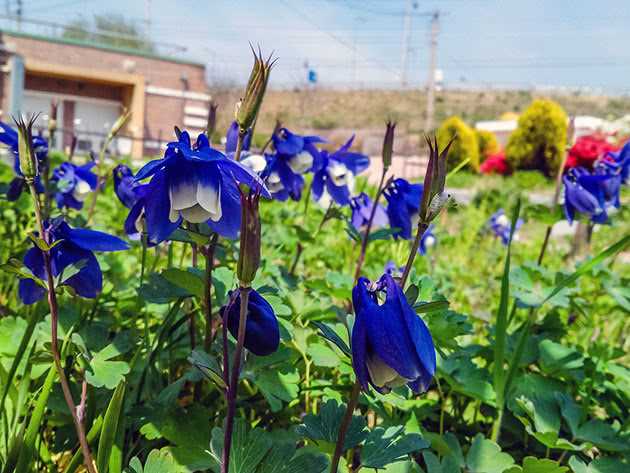
Once your aquilegia seedlings have emerged, it’s important to protect them from pests and diseases that can hinder their growth and survival. Here are some tips to keep your seedlings healthy:
1. Mulching
Applying a layer of mulch around your aquilegia seedlings can help suppress weed growth and provide a barrier against pests. Organic mulches like straw or bark can also improve soil moisture retention and regulate soil temperature.
2. Monitoring
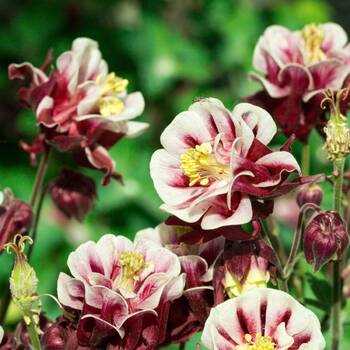
Regularly inspect your aquilegia seedlings for signs of pests or diseases. Look for damaged leaves, chew marks, holes, or discoloration. Early detection can help you intervene before the problem becomes severe.
3. Handpicking
If you spot any pests like aphids or caterpillars on your aquilegia seedlings, you can remove them by hand. Wear gloves and carefully pick off the pests, dropping them into a bucket of soapy water to kill them.
4. Companion planting
Consider planting companion plants that can help repel pests or attract beneficial insects to your aquilegia seedlings. For example, marigolds can deter aphids, while herbs like dill or fennel can attract predatory insects that feed on pests.
5. Watering
Avoid overwatering your aquilegia seedlings, as excessive moisture can create favorable conditions for diseases like root rot. Ensure the soil is well-drained, and water only when the top inch of soil feels dry to the touch.
6. Fertilizing
Use a balanced fertilizer specifically formulated for seedlings to provide them with the necessary nutrients for healthy growth. Follow the manufacturer’s instructions for application rates.
7. Disease management
If you notice signs of disease on your aquilegia seedlings, such as wilting, leaf spots, or powdery mildew, you may need to apply a fungicide. Choose a product labeled for the specific disease you are dealing with and follow the instructions carefully.
8. Protecting from extreme weather
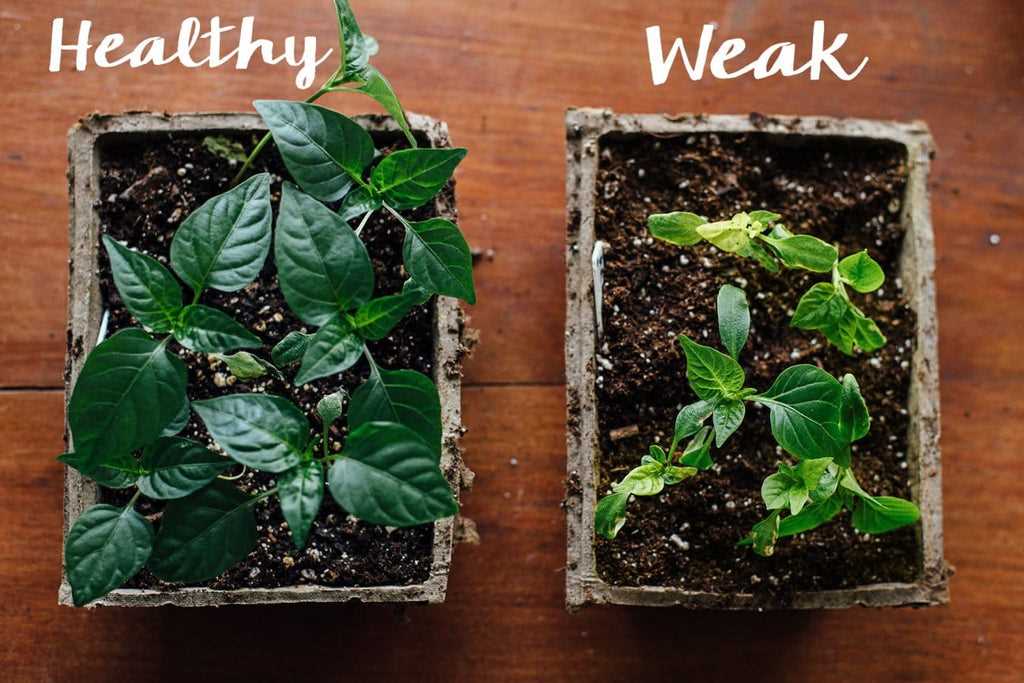
Aquilegia seedlings are susceptible to damage from extreme heat or cold. Provide shade or use row covers to protect them from intense sunlight, and bring them indoors or cover them with a frost cloth during cold snaps.
9. Crop rotation
To prevent the buildup of pests or diseases in the soil, rotate the location of your aquilegia seedlings each year. Avoid planting them in the same spot where they were grown the previous season.
10. Proper disposal
If you encounter any diseased or pest-infested plants, it’s crucial to properly dispose of them to prevent the spread of pests or diseases. Bag them and throw them away or burn them if allowed in your area.
By following these tips, you can protect your aquilegia seedlings from pests and diseases, allowing them to grow into healthy and beautiful plants.
Ensure Proper Air Circulation for Healthy Growth
- Proper air circulation is essential for the healthy growth of aquilegia seedlings.
- Good air circulation helps prevent the buildup of moisture and fungus that can lead to diseases like damping-off.
Here are some tips to ensure proper air circulation:
- Provide adequate spacing: When sowing aquilegia seeds, make sure to provide enough space between each seed to allow for proper airflow. This will prevent overcrowding and increase air circulation around the seedlings.
- Use a fan: If you are growing aquilegia seedlings indoors, use a small fan to create gentle air movement. This will help improve air circulation and strengthen the seedlings’ stems.
- Position the seedlings correctly: When transplanting aquilegia seedlings into larger containers or the garden, make sure to position them in a way that allows air to circulate freely around the plants. Avoid overcrowding them or placing them too close to walls or other plants.
Why is proper air circulation important?
Proper air circulation helps in the following ways:
- Prevents the buildup of moisture: Good airflow helps prevent excess moisture from accumulating around the seedlings, which can lead to diseases like damping-off. Damping-off is a fungal disease that causes the decay and death of young seedlings.
- Reduces the risk of fungal diseases: Adequate air circulation reduces the chance of fungal diseases, as fungi thrive in moist and stagnant air. Good airflow helps dry out the foliage quickly and minimize the risk of diseases like powdery mildew.
- Strengthens the seedlings: Gentle air movement created by good air circulation helps strengthen the stems of seedlings. This leads to sturdier and healthier plants that are better equipped to withstand external stressors like wind and rain.
Fertilize Your Aquilegia Seedlings for Optimal Nutrition
Once your Aquilegia seedlings have developed their first set of true leaves, it is important to start fertilizing them to provide them with the necessary nutrients for healthy growth. Proper fertilization can help to ensure strong and vigorous plants, as well as increase their resistance to diseases and pests.
Here are some tips to help you fertilize your Aquilegia seedlings:
- Choose a balanced fertilizer: Look for a fertilizer that has an equal ratio of nitrogen (N), phosphorus (P), and potassium (K). This balanced ratio will provide your seedlings with all the essential nutrients they need for healthy growth.
- Start with a diluted solution: When applying fertilizer for the first time, it is important to start with a diluted solution. This helps to prevent the seedlings from being overwhelmed by a high concentration of nutrients. Follow the instructions on the fertilizer package for the correct dilution ratio.
- Apply fertilizer sparingly: Aquilegia seedlings do not require heavy feeding. Over-fertilization can actually be detrimental to their growth. Apply the diluted fertilizer solution sparingly, making sure to cover the root zone of the seedlings evenly.
- Water after fertilizing: After applying the diluted fertilizer solution, water the seedlings thoroughly. This helps to evenly distribute the nutrients and prevent the build-up of salts in the soil.
- Monitor growth and adjust fertilizer application: Keep an eye on the growth of your Aquilegia seedlings. If they show signs of nutrient deficiency, such as yellowing leaves or stunted growth, you may need to increase the frequency or strength of your fertilizer application. On the other hand, if the seedlings are growing vigorously and producing excessive foliage, you may need to decrease the amount of fertilizer applied.
Remember, fertilizing your Aquilegia seedlings is just one part of their overall care. They also need adequate sunlight, well-draining soil, and regular watering to thrive. By providing your seedlings with the right balance of nutrients, you can help them develop into healthy and beautiful plants.
Monitor and Care for Your Aquilegia Seedlings for 25 Days
Once you have successfully sown your Aquilegia seeds and they have germinated, it is crucial to continue monitoring and caring for the seedlings to ensure their healthy growth. Here is a step-by-step guide to help you take care of your Aquilegia seedlings for the next 25 days.
Step 1: Watering
Watering is one of the most important aspects of caring for your Aquilegia seedlings. Make sure to keep the soil consistently moist, but not waterlogged. Water the seedlings gently using a spray bottle or a watering can with a fine nozzle to prevent damage to their delicate leaves.
Step 2: Light
Aquilegia seedlings require bright but indirect sunlight to grow properly. Place them in a location that receives approximately 6-8 hours of sunlight each day. If you are growing them indoors, consider using fluorescent grow lights to provide the necessary light intensity.
Step 3: Temperature
Aquilegia seedlings prefer cool temperatures ranging between 60-70°F (15-21°C). Avoid exposing them to extreme temperature fluctuations or drafts, which can stress the seedlings.
Step 4: Fertilizer
Once the seedlings have developed their first set of true leaves, you can start applying a diluted, balanced liquid fertilizer every two weeks. Follow the instructions on the fertilizer packaging for the correct dilution ratio.
Step 5: Thinning
As the seedlings grow, they will start to compete for space and nutrients. Thin out the weaker seedlings, leaving only the strongest and healthiest ones. This will ensure that each plant has enough space to grow and thrive.
Step 6: Transplanting
If your Aquilegia seedlings have outgrown their containers or the seed tray, it is time to transplant them into individual pots or a larger seed tray. Handle the seedlings carefully by their leaves to avoid damaging their fragile stems.
Step 7: Protection
Protect your Aquilegia seedlings from pests such as slugs and snails by using organic pest control methods or placing copper tape around the pots. Also, watch out for common diseases like powdery mildew and treat them promptly if necessary.
Step 8: Support
As your Aquilegia seedlings grow taller, they may need support to prevent them from falling over. Insert small bamboo stakes or plant supports next to the seedlings and gently tie them to the support using soft gardening twine.
By following these steps and monitoring your Aquilegia seedlings closely, you can ensure that they grow into healthy and beautiful flowering plants. Enjoy the process and the enchanting beauty of your Aquilegia garden!
Questions and Answers:
What is Aquilegia?
Aquilegia, also known as Columbine, is a beautiful flowering plant that belongs to the Ranunculaceae family. It is known for its unique and delicate flowers that come in a variety of colors.
When is the best time to sow Aquilegia seeds?
The best time to sow Aquilegia seeds is in the early spring, when the soil has started to warm up. This will give the seeds enough time to germinate and establish themselves before the hot summer temperatures arrive.
What kind of soil is best for growing Aquilegia seeds?
Aquilegia prefers well-draining soil that is rich in organic matter. A mix of garden soil, compost, and sand is ideal for providing the right conditions for the seeds to germinate and grow.
How should I prepare the soil before sowing the Aquilegia seeds?
Before sowing the Aquilegia seeds, you should prepare the soil by removing any weeds or debris. Then, loosen the soil and mix in some compost to improve its fertility and drainage.
How often should I water the Aquilegia seeds?
It is important to keep the soil evenly moist but not waterlogged when growing Aquilegia seeds. Water the seeds carefully and avoid overwatering, as this can cause the seeds to rot.







